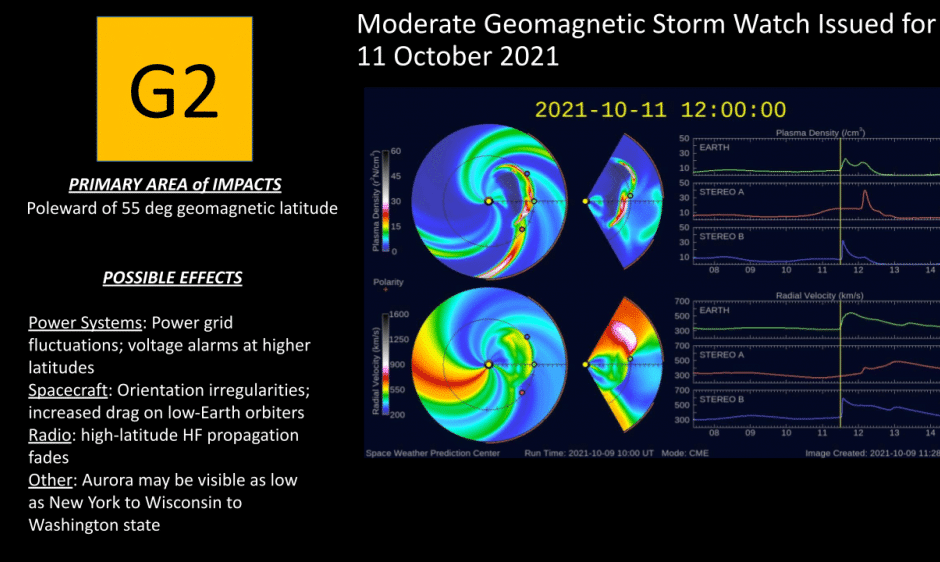US Magnetic Storm Warning: Solar Flare May Disrupt Power Grids
on Oct 11, 2021 • Updated Jan 15, 2025

A US agency has issued a warning to Americans about a geomagnetic storm that may impact the electrical grid when it strikes the Earth today.
NOAA, the National Oceanic and Atmospheric Administration warned about the solar flare as it was observed on Saturday, October 9th, 2021. The Coronal Mass Ejection or CME, shot out from the side of the sun directly facing Earth and comes as we are already experiencing a large amount of solar activity.
3-Day Forecast Issued 2021 Oct 11 1230 UTC:
The greatest expected 3 hr Kp for Oct 11-Oct 13 2021 is 6 (NOAA Scale G2).
S1 or greater: 5%, 5%, 5%. R1-R2: 10%, 10%, 10%.
R3 or greater: 1%, 1%, 1%. https://t.co/gPw8AeBd9u— NOAA Space Weather Prediction Center (@NWSSWPC) October 11, 2021
After the CME was observed, it is predicted to hit the planet on Monday, October 11th, 2021, and will likely cause interruptions in power voltage and delivery when it hits the planet’s atmosphere.
A G2-category geomagnetic storm is considered “moderate” and will hit the US midday on the 11th with effects lasting well into October 12th.
The expected disruptions include power grid fluctuations and voltage alarms at the most exposed parts of the planet. Furthermore, NOAA said some satellites could feel the effects and undergo “orientation irregularities” requiring intervention from ground control operators.
Low-Earth-Orbit devices, like Elon Musk’s Starlink internet satellites, may experience increased drag.

Enjoyable effects of the CME include a visible aurora as far south as New York, Wisconsin, and Washington state. Residents in those locations may be able to view the event with the naked eye depending on their latitude and the total output of the storm.
As with the visible Aurora in higher latitudes of the United States, those higher latitudes are also the locations expected to feel the worst effects of the solar flare on the power grid.
No major disruptions or interruptions are expected at this time.
Watch the USGS video explaining the possible effects and causes of solar storms below.












